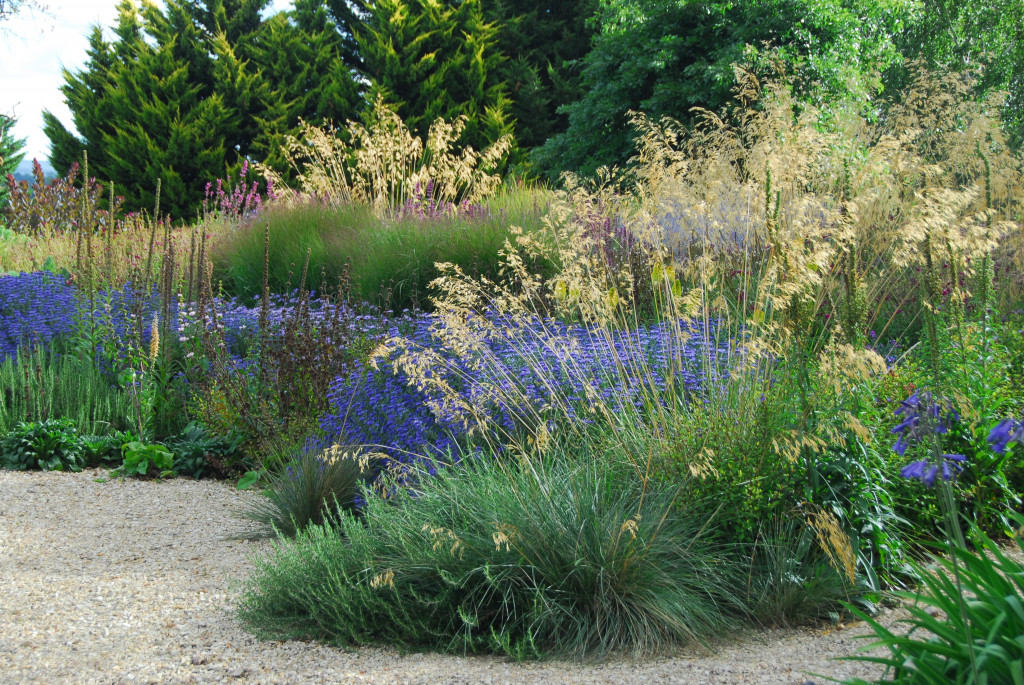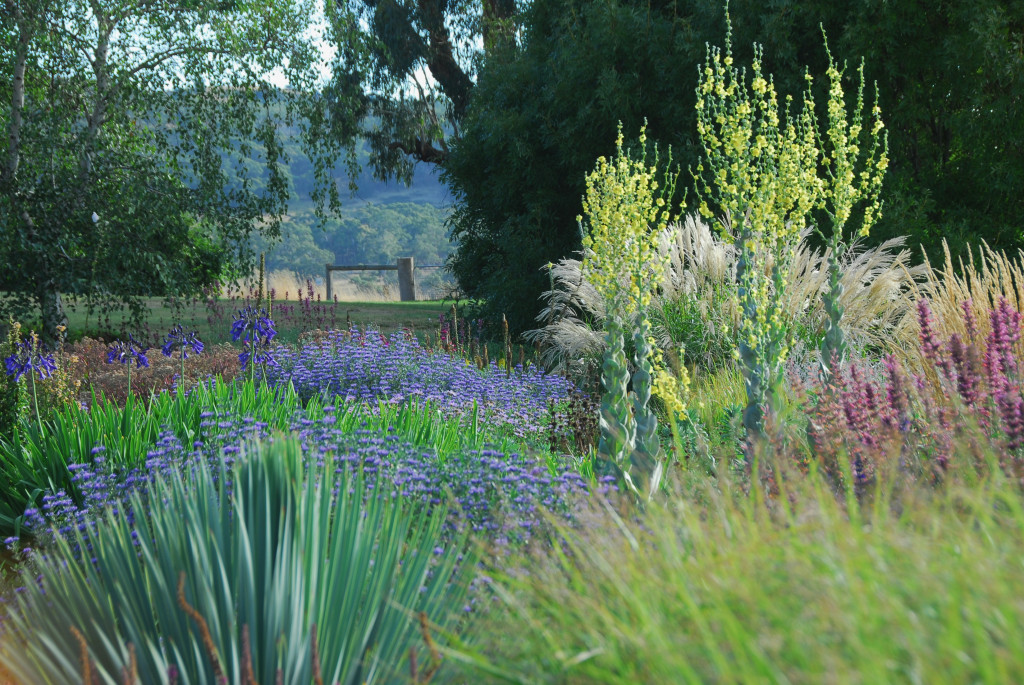OK, I’ve resigned myself to the fact that today’s Plant of the Week has to be out of season. Once the last of the autumn leaves blows away in my garden, there’s really nothing to see until the first snowdrops at least six weeks later.
There’s one glaring exception – the incredibly obliging Clematis napaulensis, which truly belongs to June and July, but I already wrote about that here (and by the way, if you grow it, go and take a look at it after dark with your phone torch. The greenish flowers are way more evident under artificial light, for which I can’t offer a single explanation).
So nearly six months after its floral peak, I commend to you Caryopteris ‘Heavenly Blue’. By far the bluest of all blue flowered plants I grow, it’s possibly the most asked-about when I’m showing pics of my summer planting. From an otherwise silent audience, I’ll always have someone call out ‘Wait! What’s that incredible blue thing?’

And while Caryopteris ‘Heavenly Blue’ finds its context amongst other summer flowering perennials in my planting, it’s actually a subshrub, which is a plant with a woody base but ‘herbaceous’ top growth. So unlike its surrounding truly herbaceous companions it doesn’t get cut to the ground each winter, it just gets reduced back to a (pretty ugly) mess of twigs about 30cm high, from which all the new growth emerges in spring, to flower in summer at about 90cm. So its treatment is not dissimilar to English lavender, or Russian sage (Perovskia/Salvia yangii).

The trick with it – visually – is to plant it in reasonable sized clumps or sweeps. Curiously the same could be said of the other two plants to which it has a structural similarity. A single plant of Caryopteris makes no impact at all. I’d been so underwhelmed by it when used in this way that I’d stopped using it at all. But then I had the opportunity, and the need (not being able to get other stuff I wanted) to use it repeatedly, and in generous sweeps, and it proved itself capable of being the star of the show. Indeed it is so capable of that, that it’s critical to spread a few clumps around the garden, so that the blinding impact of the blue echoes around your field of vision, and is thus slightly diffused by repetition. Otherwise your eye rushes straight to the single clump, never to be let go.
Caryopteris ‘Heavenly Blue’ is remarkably drought tolerant, though a blast of serious heat or drought at flowering time can cut its flowering time short. It’s at its best for several weeks, but even after flowering (if grown in a sweep of at least five plants), the seed-heads provide a textural interest, and are washed in a slight stain of Indian ink blue.

I found C. ‘Heavenly Blue’ to be such a great performer too – even in the worst soil. Iwill take your point and propagate heaps to use repetatively and in clumps in my new garden … wherever that may be.